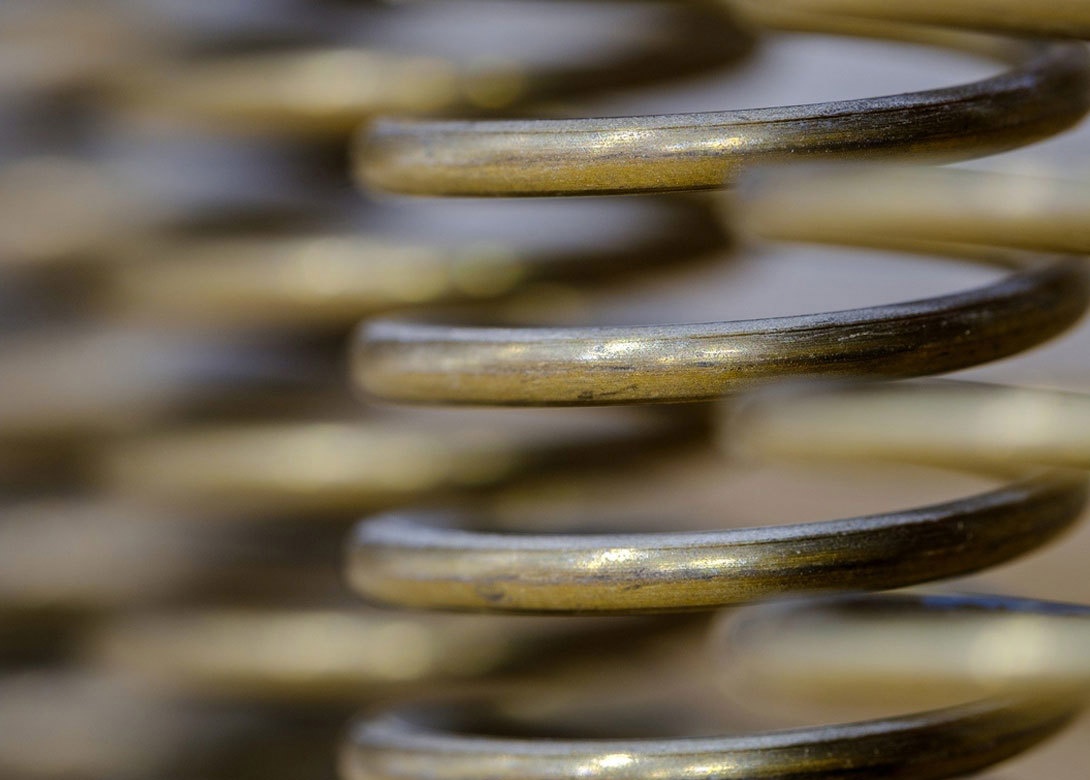
When choosing a spring for your industrial application, one of the major considerations is the material, as this will determine the spring’s suitability for the environment it is working in. Choose the wrong one and you could be facing a costly redesign or repair job down the line. Here, Justin Lawrence, applications engineer at TFC Ltd, explains the suitability of different alloys for specific environments.
When choosing a spring, the choice of materials range from standard carbon spring steel, through a variety of stainless steels and all the way to more exotic nickel-chromium alloys. To make an informed decision regarding what material is best for your application a good understanding of the properties of each alloy with respect to temperature and corrosion resistance is essential.
The first environmental factor that can influence the material choice is temperature. When springs are used in environments close to or outside their recommended operating temperatures, it can lead to permanent deformation, or in the case of extreme cold, to a brittle fracture.
For applications operating at ambient temperatures, SAE 1070-1090 carbon tempered steel’s maximum recommended temperature of 121°C will probably serve you well. This standard material is widely used in many industrial applications. Tensile and yield strength are maximised as a result of the oil tempered martensitic structure.
For applications involving elevated temperatures, 17-7 Ph/C stainless steel offers up to 343°C as a maximum recommended temperature. Spring properties are achieved by precipitation hardening condition C to condition CH900.
A286 stainless steel, or maybe inconel 718 are the pinnacle of heat resistant alloys, boasting maximum recommended temperatures of over 500°C. However, these materials come with a much lower tensile strength, meaning careful consideration throughout the design process is critical to ensure the springs will function correctly.
For extreme low temperatures, such as those in cryogenic systems, choice of material is equally important. In these applications 300 series stainless steels or Nickel alloys are normally preferred.
Corrosion resistance
Alongside thermal damage, corrosion can also cause springs to fail. Corrosion occurs when metals react with their surroundings, this can lead to microscopic cracks that will eventually fail. As a result, corrosion is a much more relevant threat to carbon steel, which is vulnerable to atmospheric damage when not properly sealed. For improved performance 17-7 stainless steel has a similar corrosion resistance up to 302 stainless, whilst offering excellent spring properties. 316 stainless offers higher corrosion resistance due to its molybdenum content and is widely used in chemical or sea water applications.
Highly corrosive environments can often require more than the protection offered by stainless steel. High performance alloys such as Inconel and elgiloy are specifically designed to survive harsh environments.
By consulting with a fastenings and fixings company with a wealth of experience in springs, designers can learn about what options are available to them and which are most appropriate and cost effective for their application. They can then benefit from the experience of a specialist spring designer, who can develop bespoke springs to meet the required load characteristics and to operate in the harshest environments.

Having spent a decade in the fastener industry experiencing every facet – from steel mills, fastener manufacturers, wholesalers, distributors, as well as machinery builders and plating + coating companies, Claire has developed an in-depth knowledge of all things fasteners.
Alongside visiting numerous companies, exhibitions and conferences around the world, Claire has also interviewed high profile figures – focusing on key topics impacting the sector and making sure readers stay up to date with the latest developments within the industry.





